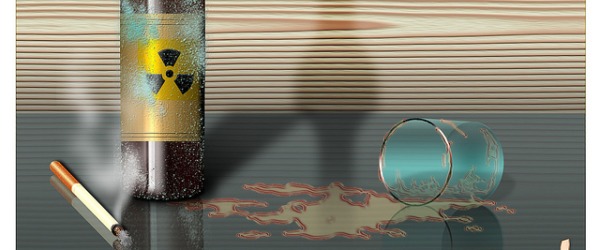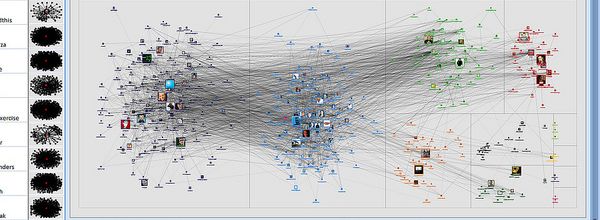Reductarianism and veganism are sweeping the globe, including research laboratories. As early as 1959, Russel and Burch laid down some important principles on how to use animals judiciously and wisely in research. They described the 3Rs concept, which emphasizes replacement, reduction, and refinement of animal models. But what about the range of animal-derived products we use in the lab?
Without realizing it, we use many animal-derived products in the lab that are either direct or indirect products of animal farming. In almost every step, animal farming releases greenhouse gases into the atmosphere, disrupting weather, temperature, and ecosystems. [1]
Apart from the environmental effects, animal-derived products can get quite expensive. In recent years, with certain countries reducing meat consumption, [2] there could be an increase in the price of meat-industry byproducts like fetal calf serum (FCS) and bovine serum albumin (BSA). Other reasons to consider animal-free products include the ethics of animal farming and the variability and contamination of products that could interfere with the reproducibility of experiments.
Just like vegan alternatives, there are several options available to reduce the use of animal products in the lab. This article gives information on some commonly used animal-derived products and their alternatives.
Animal Products Commonly Used in the Lab
Fetal Bovine Serum
Fetal calf serum, also known as fetal bovine serum (FBS), has been used as a universal growth supplement for cell and tissue culture media for more than half a century. FBS contains a vast range of factors required for cell adhesion, growth, and proliferation for most types of human and animal cells. Although it has been used for many years, FBS has not been fully characterized. Recent proteomic and metabolic studies have shown that FBS contains approximately 1,800 proteins [3] and more than 4,000 metabolites. [4] Although the presence of these components may seem promising for healthy cell/tissue culture growth, there are downsides to using FBS. For example, FBS components can vary from batch to batch, which can affect the reproducibility of experiments, and FBS can contain components that can negatively affect your experiments as well as contaminants that pose a high biosafety risk. In contrast, animal-free media yields consistent results, reduces batch and lot variations, and is cost-effective. Human platelet lysates are an option to replace FBS. However, for proper definition and reproducibility, chemically defined animal-free media is the best choice for cell culture.
There are several companies that make serum-free media or cell culture supplements allowing you to purchase pre-made serum-free solutions. Alternatively, you may want to make your own media.
Making an in-house serum-free medium can avoid the drawbacks of commercial media like limited ingredient information and changes in price and composition. High-throughput and computer-aided designs can help with formulating and screening serum-free media. [5] [6] The FCS-free database has a wealth of information on various FCS- and animal-free media along with formulae to make in-house serum-free media.
Matrices (Collagen, Extracellular Matrices, etc.)
The extracellular matrix (ECM) is present in all tissues and organs and contains various components like collagen, enzymes, and proteins that help in cell adhesion, communication, and growth. [11] In the lab, ECM mimics are used in cell culture, tissue culture, tissue engineering, and organoid cultures.
Often, matrices are made from various animal sources like fish, cows, mice, and calfskin. AMSBIO makes an animal-free ECM mimic called MAPTrix based on a genetically modified mussel protein found to help mussels attach to rocks and prevent them from washing away? This ECM mimic is highly preferred as it is non-toxic, biodegradable, and less immunogenic than animal-derived ECM.
BSA/Milk for Blocking
BSA and milk are often used as blocking agents to prevent nonspecific binding during immunohistochemistry and protein and nucleic acid blotting. BSA and milk are animal-derived products, but there are loads of alternatives available. Vector Laboratories, New England BioLabs, and Cell Signaling Technology make innovative, animal-free, plant-derived blockers that can replace traditional blockers.
Antibodies
Most antibodies are produced using animals or animal products. AdipoGen Life Sciences was a forerunner in making animal-free recombinant antibodies using phage display technology. Absolute Antibody makes a wide range of recombinant antibodies that are completely free from animal components.
How to Remove Other Animal-Derived Products From Your Lab
The easiest way to know about alternatives for animal-derived products is Google. Researching for this article made me realize a couple of things. 1) We are so engulfed in following the protocol or getting the results right that we never think about the source of products used, which unfortunately are often derived from animals. 2) There are several cost-effective and environmentally friendly alternatives for many animal-derived products.
The next time you use a product in the lab, take a few seconds to learn about its source, which is found in the product information sheet. The best way to know about animal-free alternatives is by talking to your sales rep. This may help you get free samples and will also help companies to understand the need for animal-free products. Ultimately, everything comes down to supply and demand.
Do you use any animal-free products in your lab? Are you trying to switch to animal-free products? If so, please share your knowledge in the comments below!
References
- Steinfeld H, et al. Livestock’s long shadow: environmental issues and options. Rome: Food and Agriculture Organization of the United Nations; 2006.
- Farchi S, et al. Meat consumption reduction in Italian regions: Health co-benefits and decreases in GHG emissions. PLoS ONE 2017; 12(8). doi:10.1371/journal.pone.0182960.
- Anderson NL, Anderson NG. The Human Plasma Proteome: History, Character, and Diagnostic Prospects. MCP 2002; 1(11):845–867. doi:10.1074/mcp.R200007-MCP200.
- Anderson NL, et al. The human plasma proteome: a nonredundant list developed by combination of four separate sources. MCP 2004; 3(4):311–326. doi:10.1074/mcp.M300127-MCP200.
- van der Valk J, et al. Optimization of chemically defined cell culture media–replacing fetal bovine serum in mammalian in vitro methods. Toxicology in vitro 2010; 24(4):1053–1063. doi:10.1016/j.tiv.2010.03.016.
- van der Valk J, Gstraunthaler G. Fetal Bovine Serum (FBS) – A pain in the dish? Alternatives to laboratory animals. ATLA 2017; 45(6):329–332. doi:10.1177/026119291704500611.







